Full story from BOAT International here
An experienced owner dialled up the race credentials of Oyster’s comfortable 27-metre to create the 885GT. Elaine Bunting discovers a winning combination
After four years of work, this is the moment of truth for the new Oyster 885GT. It has been designed and built to thrill as the company’s quickest yacht, and is minutes away from its first-ever race. The next few miles will either reveal or expose its capabilities.
Owner Anthony Ward is at the wheel of Babiana. There is a fizz of tension as the final seconds are counted down to Race 1 of the Oyster Palma Regatta. He gets a crisp start and the boat pulls ahead, slowly at first then noticeably faster and higher than the three other Oyster 885s. On the beat across the Bay of Palma, they fall steadily behind, and Babiana lays the windward mark in one long, poised tack.
Past the mark, the crew hoist an A-sail and the boat surges downwind, stretching out her lead. When we cross the finish line, our rivals seem a long way behind. Babiana’s first race ends with line honours and a win on handicap, a pipe dream for any owner or builder. It feels triumphant.
Anthony Ward had previously owned a Swan 45 and loved racing it, but when he introduced his wife, Sophie, to sailing, they switched to an Oyster 675. It was a comfortable bluewater cruiser that could be enjoyed with family and friends.
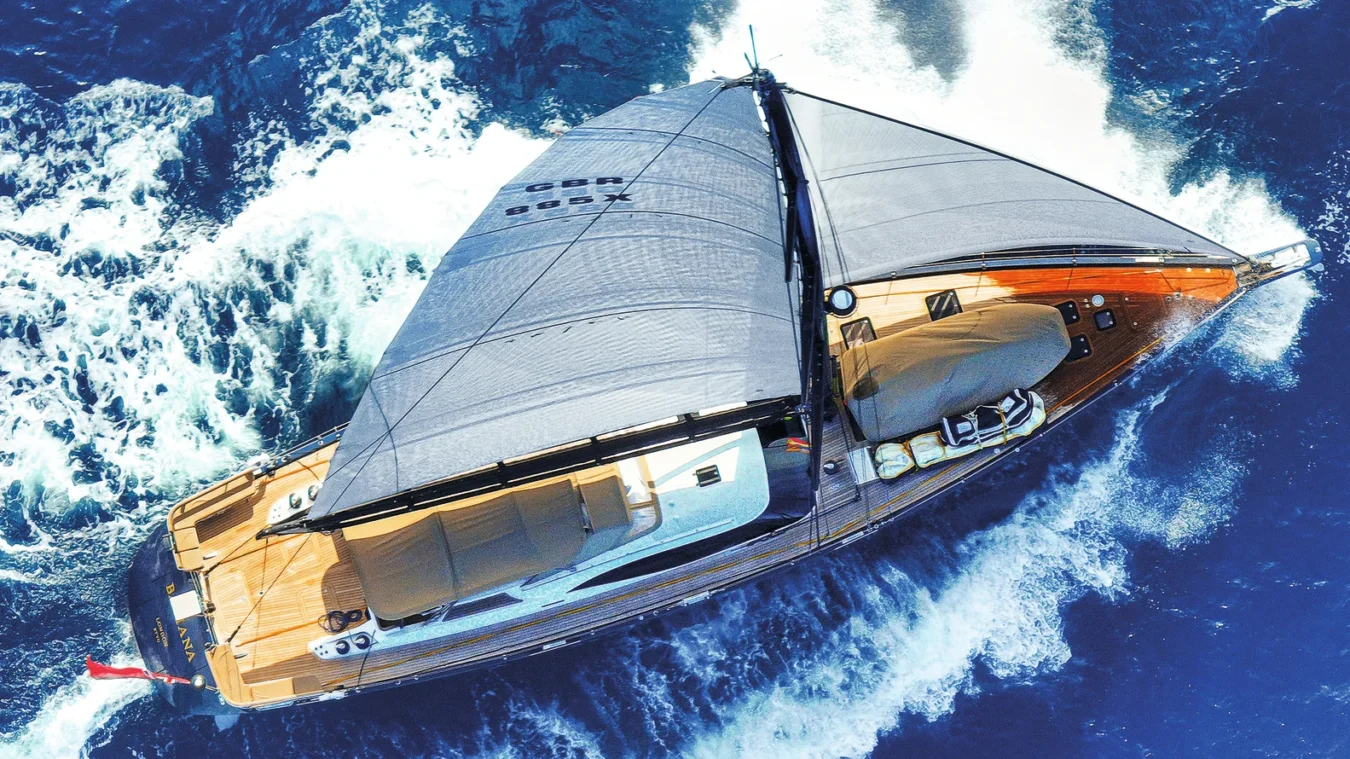
In 2019 the couple began to think about a larger yacht to take part in the Oyster World Rally, the global circumnavigation the company organises every two years.
The Oyster 885 was ideally suited to their plan: extremely comfortable, large enough to accommodate a professional skipper and crew, and a model well proven over multiple circumnavigations. But Anthony was torn. Much as he loved the Oyster, he craved the exhilaration of a high-performance boat and the competition of regatta racing.
“I wanted something a bit more sporty,” he admits. “That’s what I like. I’m into racing cars. I’ve done the London-Sydney Marathon car rally twice, as well as the London to Cape Town Rally.” So Oyster arranged a meeting with their yacht designer Rob Humphreys. Ward recalls, “We said to him, ‘Can we have this hull, but with more pace and without compromising comfort?’”
Humphreys and his design partner, his son Tom, thought about it and said yes, they had some ideas for how they could supercharge the 885, and the GT version was born.
“Ant and Sophie wanted to do something a bit different and Oyster had been asking us to look at what we could do,” says Tom Humphreys. “As an existing model, it only makes sense to go so far in changing a well-established production process, so we looked at what opportunities there were.”
They started by looking at different keel and rig configurations. The standard 885 has a bulbed fin keel with a comparatively shallow draught of 3.5 metres (the centreboard version draws only 2.3 metres). There was scope for a more aggressive keel and bulb package, and a larger sail area for the same righting moment.
“The semi-raised saloon design with the engine room over the keel area restricted what was possible with a lifting keel, and also we were working with the existing hull lines, so we had to be mindful of a tighter displacement and centre of gravity range,” explains Tom Humphreys.
“But we knew how we’d give a nice boost of performance and the best way to package everything together with a keel plan form that tracks well and is forgiving.”
Treading this fine line, they opted for a 4.2-metre deep T-shaped keel, a fairly thin cast bronze fin and 16-tonne lead bulb.
“It comes with a significant performance advantage, especially upwind,” explains Humphreys. “It also allowed us to take some displacement out of the boat by moving the VCG [vertical centre of gravity] a bit lower and increasing the righting moment.”
These were all finely judged adjustments since the Oyster 885GT also has to be a comfortable yacht for ocean passage making, able to handle the toughest conditions without punishing a crew.
“It is still in the body of a bluewater cruiser and born out of that hull form. It has to look pretty and be kind offshore – and so it is by no means as extreme as some of the more Med-focused designs,” says Humphreys.
The customisation of this production design has pushed Oyster in new directions in step with both the owners and various suppliers. The new 885GT really showcases the capabilities of the company, which has branched out with three new designs since it was bought in 2018 by investor and fellow Oyster owner Richard Hadida.
In an exacting and highly technical process, every possible means of reducing weight was explored. Lighter carbon elements were used in the build where possible. Hall Spars built a one-metre taller, three-spreader high modulus carbon mast and carbon boom, to be combined with the super lightweight AEROsix hybrid carbon rigging that Future Fibres developed for the highest-performance grand prix racers and superyachts.
Also in the interests of weight saving, jib cunninghams and halyard locks have been used and either hydraulic or manual furlers for headsails, except for the A2, which is deployed in a snuffer. Babiana also has a carbon jib foil.
An extended mast crane places the backstay further aft to allow a larger roached mainsail. A longer bowsprit increased sail area by five per cent upwind and 15 per cent downwind and the Doyle Stratis Structured Luff sail inventory has given the boat a significant improvement in speed and control.
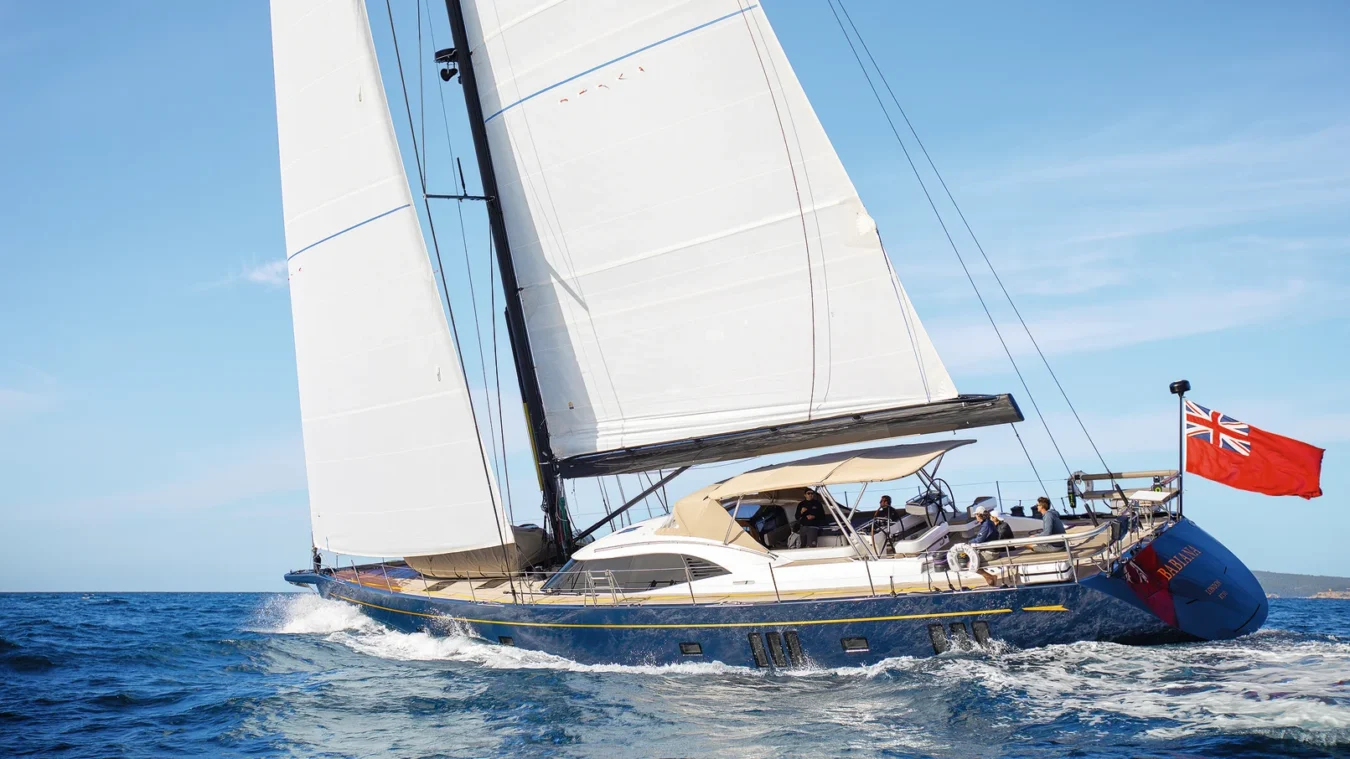
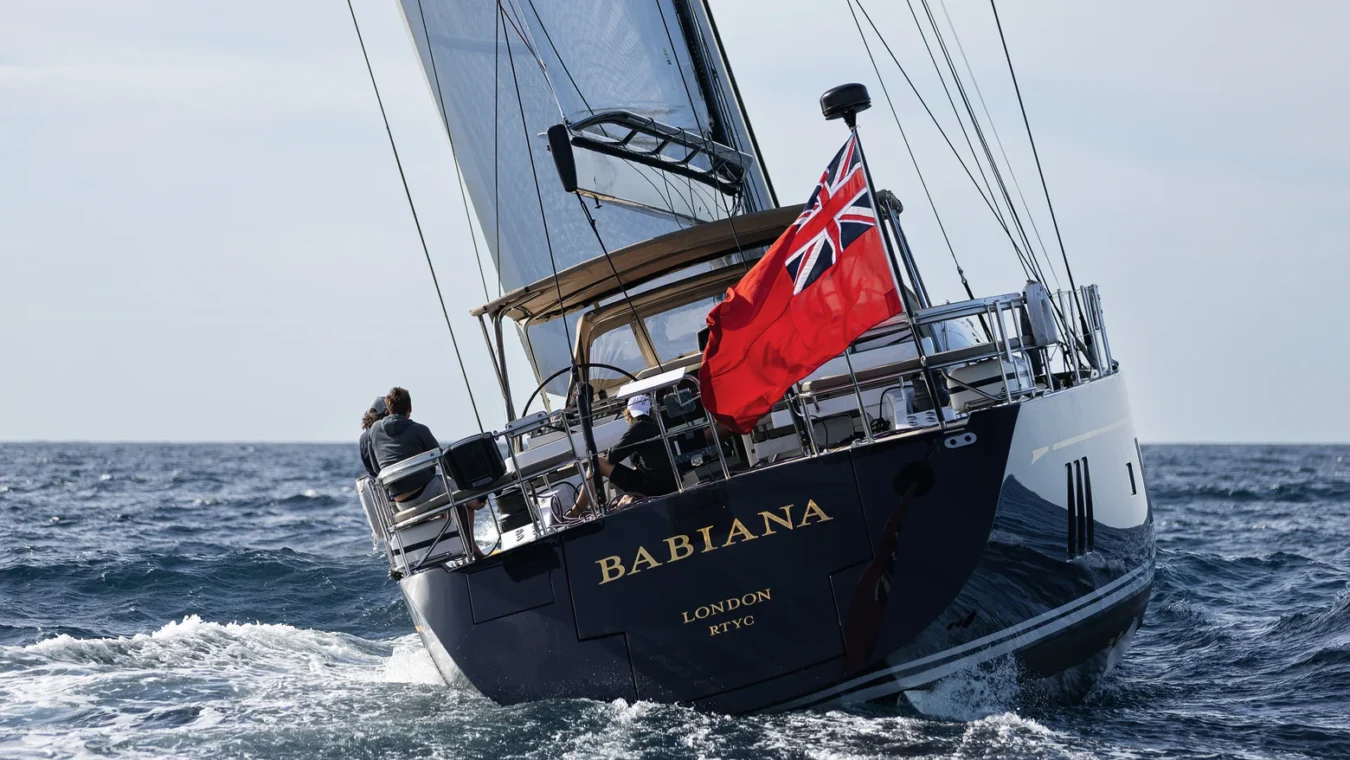
The Wards’ skipper, James O’Rorke, was involved in key decision-making. His background includes long-distance sailing in round-the-world IMOCA 60 designs, which have pioneered much of this technology.
As the person who will be captain of the 885GT in the 2024 Oyster World Rally, he was also critically invested in a yacht that would be reliable for many thousands of non-stop miles and be serviceable in remote locations.
Babiana was fitted with an upgraded Lewmar carbon winch package with three speed gears to deliver higher line speeds, and regatta-spec Technora lines that reduce the diameter of rope required, all custom built by Marine Rigging Services; “easier handling and you can get more wraps on a winch if you need to,” explains O’Rorke.
It also has the new Lewmar Vortex hydraulic system, which is lighter, uses a much smaller oil reservoir, is more efficient on DC pumps and frees up space in the engine room.
On deck, every effort was made to keep a clean look. There is under-deck sheeting, flush padeyes, and soft textile connections to V blocks. The attention to detail is impressive, yet so minimal you may need to look closely to see it.
While these technicalities may give the impression of a yacht that is primarily hard driving and exacting, Babiana’s true nature is more indulgent. From the moment you step aboard, there’s no doubt that this is a home-from-home cruiser.
An Oyster in every visible respect, it has the big centre cockpit you would expect, the large cockpit table for entertaining and Oyster’s signature deck saloon.
Babiana has been beautifully fitted in limed oak joinery, cream upholstery and contrasting walnut cabin soles (the interiors pictured here are the 12th 885 hull, which features the same layout as Babiana, save for the aft port cabin, which converts into an owner’s lounge in the former).
The silky-smooth matt varnished oak saloon table is an especially notable feature, large enough to seat 14 for dinner, but on a high-low mechanism that allows it to be converted it into an enormous daybed.
Babiana’ s performance enhancements are a trade-off, admits Richard Gibson, Oyster’s sales director. “Anthony is a racer and Sophie wants the comfort. With that lens, this is the best combination, even if it is a bit niche,” he says.
“What we have done with the GT element and for the World Rally are separate things, and Babiana will work as it is a medium displacement cruising boat with a big tankage and big power generating capabilities.”
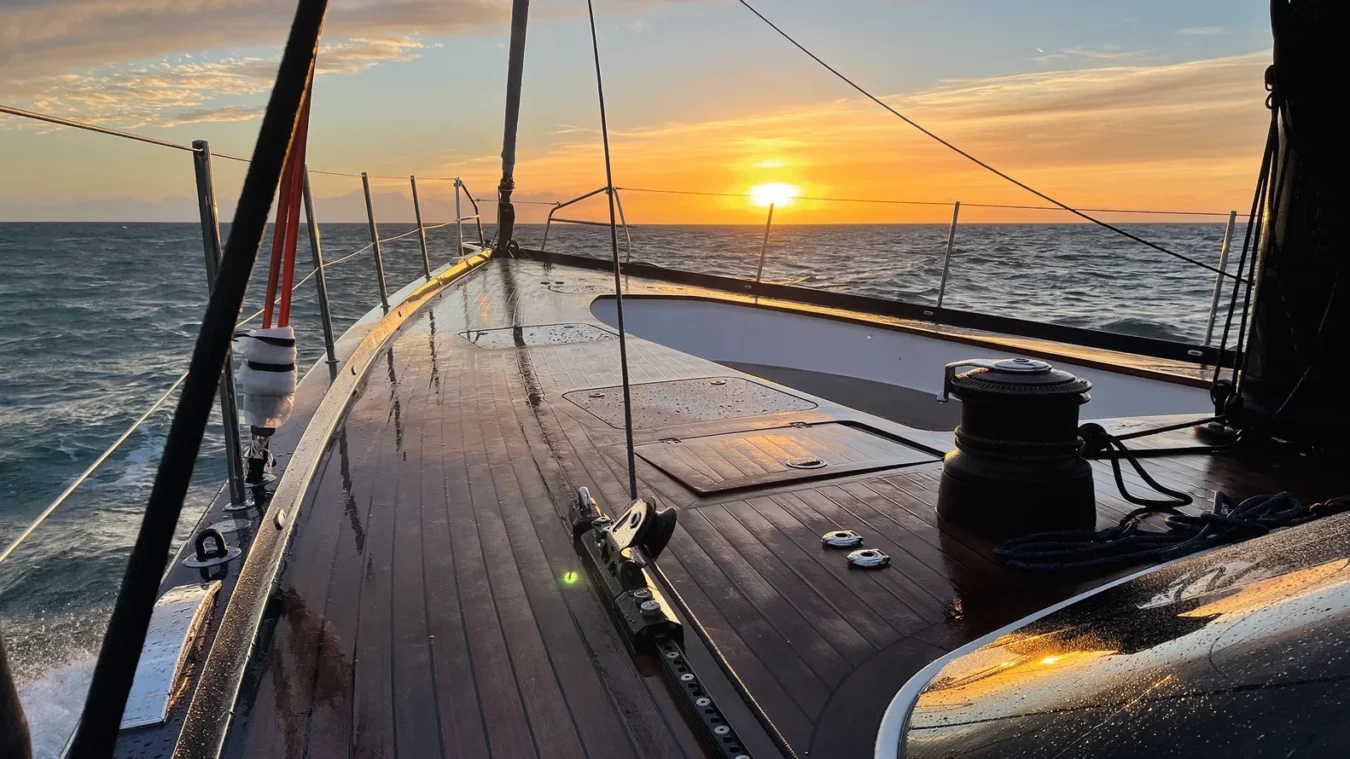
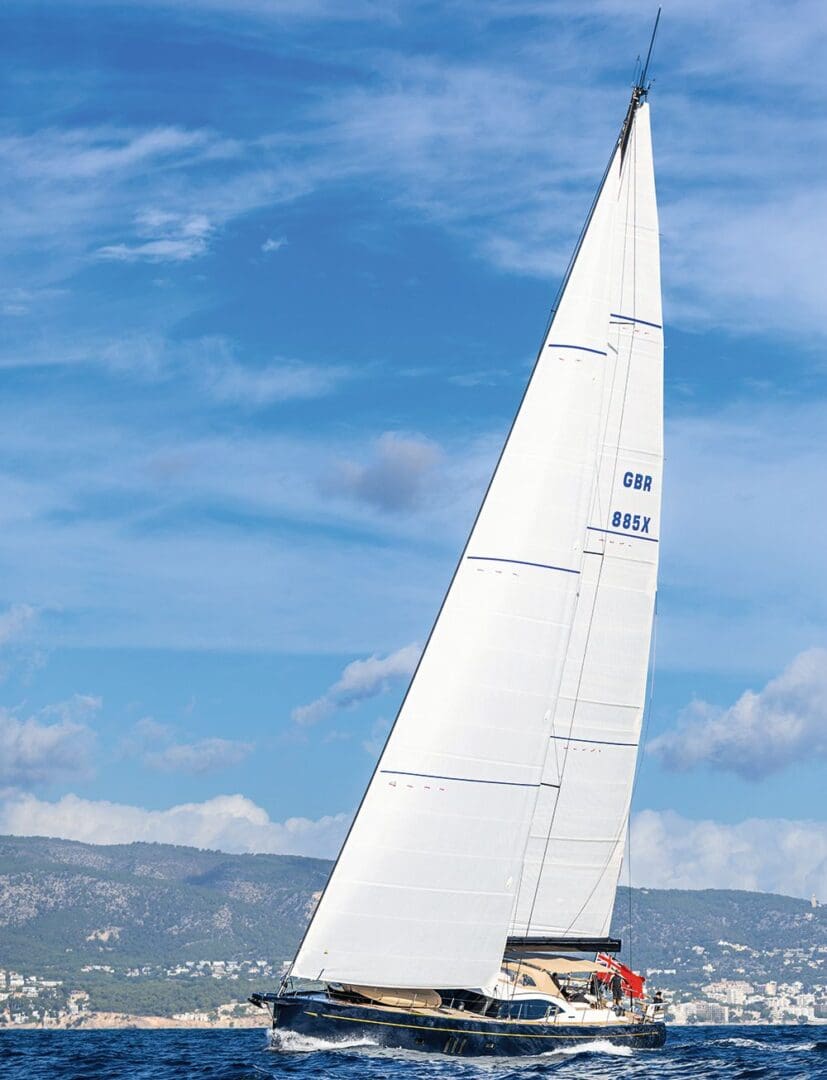
For cruising round the world, there may be some compromises to accept. The deeper draught will mean there may be places such as some of the Pacific atolls that Babiana cannot access, or she’ll have to anchor further out from shore.
Some of the equipment and systems require a specialist level of maintenance. The boat is more demanding to sail, and that is reflected in the crew tally – Babiana will have four paid crew for the round the world rally.
“If we are sailing 3,000 miles we will be able to reduce the passage time by two or three days. So we will have more time cruising, more maintenance time, and we will have more weather options,” says Captain O’Rorke.
A round the world rally spanning 16 months is a fairly compressed time frame, so these will definitely be valuable gains. The crew have already been revelling in the faster average speeds Babiana can make. “We had a great Biscay crossing,” says O’Rorke, “and we smashed the passage from Vigo to Gibraltar, when we were doing 18 to 20 knots at times. We are super happy. I love sailing her.”
Inshore regatta racing is something the Wards plan to do more of after completing their circumnavigation. The Oyster Regatta in Palma was a promising sign of the boat’s capabilities, and Babiana should eventually be even quicker after optimisation and with familiar regatta crew. It is obvious that the new 885GT is a potent hybrid.
“I came away feeling it was significantly quicker upwind and possibly there are some areas to tweak downwind and more to be had there,” observes Tom Humphreys.
“It is a fractionally more tweaky boat to sail well and you can fall off your optimum numbers more quickly, but this is still a fairly tolerant configuration. As you can imagine, she’s been a joy to work on, a great opportunity and it has pushed the team to think outside the box.”
Oyster’s Richard Gibson is right to call the 885GT “niche”, and it’s interesting that the company has been so prepared to develop it, as projects such as this are intense and resource-hungry. Babiana is proof, however, that Oyster can successfully create a special edition for an owner who yearns for something unique, while preserving exactly what the brand is all about.
ABOUT DOYLE SAILS // Doyle Sails strives to deliver success through high-performance, high-quality, custom sails that continue to redefine the boundaries of sailmaking technology and innovation; whilst connecting sailors to inspire, support and encourage sailing.
Our obsession with sailing takes us to every corner of the world and onboard every yacht. We become part of teams, share in the adventures of friends and families, sharing our knowledge and experience with those with the same passion. Sailing is in our DNA, and we are the custodians of a legacy that has been supporting sailors for four decades and counting.
